Is Your Dog Intelligent? Find Out! – Part 3
 In Is Your Dog Intelligent – Part 3, we will be looking at the different behaviours in our dogs. You can see Part 1 and Part 2 here. Part 3 will give you a good insight as to which dog you should be looking for if you are intending to increase your family!
In Is Your Dog Intelligent – Part 3, we will be looking at the different behaviours in our dogs. You can see Part 1 and Part 2 here. Part 3 will give you a good insight as to which dog you should be looking for if you are intending to increase your family!
A comprehensive study
In 1985, a comprehensive study was published in the Journal of the American Veterinary Medical Association. This study was on the minds of different breeds and 13 behaviour traits were chosen to be investigated. The most popular breeds at that time, 56 of them, were assessed by a panel of experts including vets, dog trainers and breed judges.
 The 13 traits were as follows:
The 13 traits were as follows:
- Aggression towards other dogs
- Destructiveness
- Demand for affection
- Dominance over owner
- Ease of housebreaking
- Excessive barking
 Excitability
Excitability- General activity
- Obedience training
- Playfulness
- Snapping at children
- Territorial defence
- Watchdog barking
Each breed was evaluated and given a score of 1 – 10 for each trait. These 13 characteristics were then put into 3 different categories. Aggression, Reactivity and Trainability.
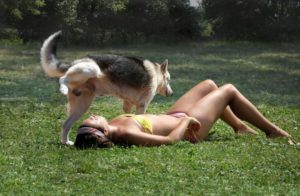
The Aggression category
This category contained the traits of: aggression with other dogs, dominance over owner, territorial defence and watchdog barking.
The Reactivity category
The Reactivity category included: demand for affection, excessive barking, excitability, general activity and snapping at children.
The Trainability category
This category had just two of the traits: housebreaking ease and obedience training.
Then there’s the groups
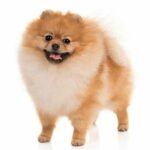
The breeds were then put into groups depending on their high, medium or low level of each of the categories. The groups and the breeds allocated to them are as follows:
Group 1 – High reactivity, Low trainability, Medium aggression
Lhasa Apso, Pomeranian, Maltese Terrier, Cocker Spaniel, Boston Terrier, Pekingese, Beagle, Yorkshire Terrier, Weimaraner, Pug & Irish Setter.
Group 2 – Very low reactivity, Very low aggression, Low trainability
English Bulldog, Old English Sheepdog, Norwegian Elkhound, Bloodhound & Bassett Hound
Group 3 – Low reactivity, High Aggression, Low trainability
Samoyed, Alaskan Malamute, Siberian Husky, Saint Bernard, Afghan Hound, Boxer, Dalmation, Great Dane & Chow Chow.
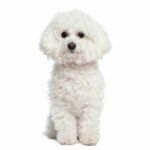
Group 4 – Very high trainability, High reactivity, Medium aggression
Shetland Sheepdog, Shih Tzu, Miniature Poodle, Toy Poodle, Bichon Frise, Standard Poodle, Springer Spaniel & Welsh Corgi.
Group 5 – Low aggression, High trainability, Low reactivity
Labrador Retriever, Hungarian Viszla, Brittany Spaniel, German Short Haired Pointer, Newfoundland, Chesapeake Bay Retriever, Keeshond, Collie, Golden Retriever & Australian Shepherd.
Group 6 – Very high aggression, Very high trainability, Very low reactivity
German Shepherd, Akita, Doberman, Rottweiler.

Group 7- Very high aggression, High reactivity, Medium trainability
Cairn Terrier, West Highland White Terrier, Chihuahua, Fox Terrier, Scottish Terrier, Dachshund, Miniature Schnauzer, Sily Terrier, Airedale Terrier.
Not your dog?
Now I know there will be many owners who will dispute these groupings saying things like “my Miniature Schnauzer is not at all aggressive so what’s with this ‘very high aggression’ nonsense. But you need to take these groupings as a generalisation. There will be many dogs that do not fit into their grouping, but you can use these groups to help in your research when thinking of acquiring a dog.
Not true to breed?
There are many Border Collies for instance who have no clue about how to round up sheep, whereas the majority seem to be born to it. I have known a Rottie who would lick you to death rather than act aggressively under any circumstances. But it is generally accepted that some dogs are more prone towards aggression than others.

Pit Bulls and other powerful breeds
The Pit Bull is a prime example but there are some interesting facts about the circumstances around Pit Bull attacks. One such investigation was done regarding 20 fatalities, all due to Pit Bulls.
- 10 of the 20 dogs were owned by young men aged between 20 and 25 years.
- 11 of the owners had a criminal record, 7 of which were for violence.
- 11 of the 20 dogs had signs and evidence of being physically abused.
Is it always the dog’s fault?
There is no question that these dogs have the capacity for aggression. They are strong and well muscled and have exceptionally strong jaws that tend to lock with the strength equal to a mechanical vice. But without a doubt these powerful breeds tend to end up in the wrong hands. If their training includes physical abuse and cruelty, what can we expect. If these dogs end up being put to death because of their actions, it will be highly likely that the dog has been poorly socialised and habituated at best and brutally and cruelly treated at worst. It will not be the fault of the dog; the fault will be with the owner and/or the breeder.
Dogs that bite at the vets?
My daughter used to work as a veterinary nurse and she was bitten a few times. The thing is, she was never attacked by a Doberman, Mastif or any other powerful breed! She said she presumed that Labradors didn’t bite, but she was wrong… a couple of times! Most dogs bite out of fear of being hurt and I suspect that is why she was bitten by normally placid dogs.
 Introduce your pup to everything!
Introduce your pup to everything!
But, if a dog is bred well, socialised from an early age with humans and other pets, and I mean 1-3 weeks onwards. Introduced to numerous events, noises, places. Shown unusual objects such as, umbrellas, pushchairs, bicycles, skateboards. In fact, anything you can think of. You will be unlucky to have a dog that exhibits unwanted behaviours, particularly fearfulness and aggression.
 Increasing adaptive intelligence
Increasing adaptive intelligence
The more new things you show your pup, the more he will look at new events and experiences with curiosity rather than fearfulness. This is the secret to a confident, happy and healthy dog, physically and mentally. This will be the dog that exhibits adaptive intelligence, increasing his skills as he goes through lifes experiences.
The caveat is:
If you have a dog that is very active and needs a lots of exercise, you have to quench his desire for physical and mental activity. If you do not, then you can expect problems from these dogs. Having a dog such as this in a high rise building or a tiny bedsit will not be ideal. Leaving such a dog all day while you’re at work is also not fair on the dog. Active dogs need a couple of hours exercise daily as well as mental stimulation. Be really aware of this fact before you acquire your dog.
The remainder of the intelligence rankings
I did promise to finish the list of intelligence ranking of all the dogs that have been tested. To confirm, this list was produced by Stanley Coren, a psychology professor behaviourist and researcher who is highly renowned for his research and understanding of canine behaviour and the human canine bond.
Intelligence ranking from 21 – 79 (1-20 is at the end of Part 2)
 21. Weimaraner
21. Weimaraner- 22. Belgian Malinois & Bernese Mountain Dog
- 23. Pomeranian
- 24. Irish Water Spaniel
- 25. Vizsla
- 26. Cardigan Welsh Corgi
- 27. Chesapeake Bay Retriever, Puli & Yorkshire Terrier
- 28. Giant Schnauzer
- 29. Airdale Terrier &
- 30.
 Border Terrier & Briard
Border Terrier & Briard - 31. Welsh Springer Spaniel
- 32. Manchester Terrier
- 33. Samoyed
- 34. Field Spaniel, Newfoundland, Australian Terrier, American Staffordshire Terrier, Gordon Setter & Bearded Collie
- 35. Cairn Terrier, Kerry Blue Terrier & Irish Setter
- 36. Norwegian Elkhound
- 37. Affenpincher, Silky Terrier, Miniature Pinscher, English Setter, Pharaoh Hound & Clumber Spaniel
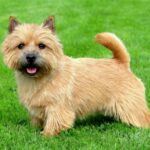
- 38. Norwich Terrier
- 39. Dalmation
- 40. Soft-Coated Retriever, Bedlington Terrier & Smooth Fox Terrier
- 41. Curly-Coated Retriver & Irish Wolfhound
- 42. Kuvasz & Australian Shepherd
- 43. Saluki, Finnish Spitz & Pointer
- 44. Cavalier King Charles Spaniel, German Wirehaired Pointer, Black & Tan Coonhound & American Water Spaniel
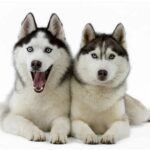 45. Siberian Husky, Bichon Frise & English Toy Spaniel
45. Siberian Husky, Bichon Frise & English Toy Spaniel- 46. Tibetan Spaniel, English Foxhound, Otterhound, American Foxhound, Greyhound & Wire-haired Pointing Griffon
- 47. West Highland White Terrier & Scottish Deerhound
- 48. Boxer & Great Dane
- 49. Dachshund & Staffordshire Bull Terrier
- 50. Alaskan Malamute
- 51. Whippet, Chinese Shar-pei & Wire Fox Terrier
- 52.
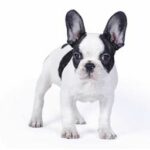 Rhodesian Ridgeback
Rhodesian Ridgeback - 53. Ibizan Hound, Welsh Terrier & Irish Terrier
- 54. Boston Terrier & Akita
- 55. Skye Terrier
- 56. Norfolk Terrier & Sealyham Terrier
- 57. Pug
- 58. French Bulldog
- 59. Brussels Griffon & Maltese Terrier
- 60.
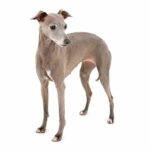 Italian Greyhound
Italian Greyhound - 61. Chinese Crested
- 62. Dandie Dinmont Terrier, Petit Basset Griffon Vendeen, Tibetan Terrier, Japanese Chin & Lakeland Terrier
- 63. Old English Sheepdog
- 64. Great Pyrenees
- 65. Scottish Terrier & Saint Bernard
- 66. Bull Terrier
- 67.
 Chihuahua
Chihuahua - 68. Lhasa Apso
- 69. Bull Mastiff
- 70. Shih Tzu
- 71. Basset Hound
- 72. Mastiff & Beagle
- 73. Pekingese
- 74. Bloodhound
- 75.
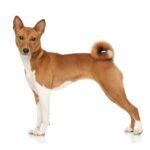 Borzoi
Borzoi - 76. Chow Chow
- 77. Bulldog
- 78. Basenji
- 79. Afghan Hound
I hope this has given you some insight to the differences between breeds. If you wish to acquire a dog, you can now take a look at the groupings and see which type of dog best suits your lifestyle. You will be more likely to acquire your pet for life. This is preferable to having to give him back to the breeder or dog’s home because he is not suited to your lifestyle.

This article is very interesting. I have a Labrador at home and I totally agree with you .He was so much easier to train than my dog before which was a Beagle. Also, he is very docile and he is not aggressive at all. He loves cuddles and be with my parents all the time. He is happy to see people coming around and I would say they are quite intelligent dogs.
Your article explains a lot his behaviour.
Thank you,
Yoana
Yes, Beagles are down the list a tad from the great Labrador. That’s why they use them generally, as dogs for the blind. They are very affable, happy go lucky and eager to please. I hope you have many more happy years with your lovely Labrador.
Thanks for this insightful piece on the differences between breeds of dogs with regards to intelligence. This will surely guide my discussion with my friends who have dogs and are stressing over them. I don’t keep dogs myself, but now, I do appreciate the benefit and the difference it makes to have a dog that is suited to a person’s lifestyle or even temperament.
You will have a lot to talk about with your friends Mojisola and I am gratified you found the article informative.
HI,
I love this post, talking about dog is something which definitively captures people attention, especially when you add some cute dog photos. Your Idea to explain how to understand how intelligent is our dog, is simply very nice.
I liked also the products you illustrated, on the side, being a dog owner, I think that they can really be useful.
Great job my friend.
Have a great day,
Andrea
We are a nation of dog lovers, well most of us anyway. It’s a shame you didn’t share with us the breed of your dog. Or is he/she a cross breed? I’m so pleased you like the array of products on my side panel. They are always well researched and of good quality.
I think you have hit on some really important ideas. I love how you talk about picking the right breed for your lifestyle. That is so key to the behavior of a dog. Like you say, if you live in an apartment in the city, but buy a breed of dog that needs wide open space to roam, you are asking for trouble! I also thought the statistics on pit bull attacks was incredibly interesting. I feel that while some aggression might be in the breeding, a lot of it has to do with the environment the dog experiences. I know of a pit bull that was one of the most loving dogs I’ve ever seen. Thanks for the post!
Hi there Steve, yes we also know quite a few Pit Bulls and Staffordshire Bull Terriers. I do not know of one single powerful breed that has come across as aggressive. Not in our area anyway. The owners though, are just ordinary folk who love their dogs and have brought them up well socialised and habituated, that’s the trick!